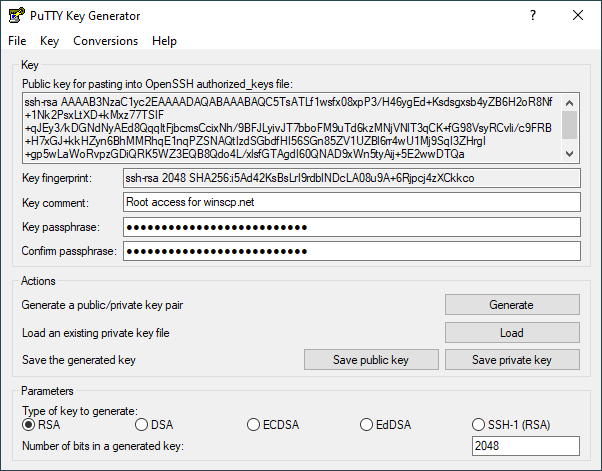Generate A Key Rsa C++
Oct 23, 2008 Hi all, The other day a colleague of mine asked me if I had a.NET version of the C sample in How to generate key pairs, encrypt and decrypt data with CryptoAPI post. C sample calls CryptoAPI directly (and you know we can do the same thing in.NET through P/Invoke), but the idea was to use System.Security classes in order to get a pure.NET solution. How to generate public/private key in C#. Asymmetric cryptography also known as public-key encryption uses a public/private key pair to encrypt and decrypt data. In.NET, the RSACryptoServiceProvider and DSACryptoServiceProvider classes are used for asymmetric encryption. Dear all, I couldn't find how to generate key pairs for rsa by writing code based. I want to generate key pairs and use then on RSA encrypt and decrypt algorithms. I want to add these key pairs to X509Certificate2 object and by the help of that object I want to use RSA algorithm. Extrodamus, Based on your post, you are trying to.
-->To sign an assembly with a strong name, you must have a public/private key pair. This public and private cryptographic key pair is used during compilation to create a strong-named assembly. You can create a key pair using the Strong Name tool (Sn.exe). Key pair files usually have an .snk extension.
Parallels 11 key generator download. Note
In Visual Studio, the C# and Visual Basic project property pages include a Signing tab that enables you to select existing key files or to generate new key files without using Sn.exe. In Visual C++, you can specify the location of an existing key file in the Advanced property page in the Linker section of the Configuration Properties section of the Property Pages window. The use of the AssemblyKeyFileAttribute attribute to identify key file pairs was made obsolete beginning with Visual Studio 2005.
Create a key pair
To create a key pair, at a command prompt, type the following command:
sn –k <file name>
Rsa Generate Key Pair C++
In this command, file name is the name of the output file containing the key pair.
The following example creates a key pair called sgKey.snk.
If you intend to delay sign an assembly and you control the whole key pair (which is unlikely outside test scenarios), you can use the following commands to generate a key pair and then extract the public key from it into a separate file. First, create the key pair:
Next, extract the public key from the key pair and copy it to a separate file:
Once you create the key pair, you must put the file where the strong name signing tools can find it.

When signing an assembly with a strong name, the Assembly Linker (Al.exe) looks for the key file relative to the current directory and to the output directory. When using command-line compilers, you can simply copy the key to the current directory containing your code modules.
If you are using an earlier version of Visual Studio that does not have a Signing tab in the project properties, the recommended key file location is the project directory with the file attribute specified as follows:
See also
-->The following example creates a named key container and adds a signature key pair and an exchange key pair to the container. This example can be run without problem even if the named key container and cryptographic keys already exist.
Note
An application should not use the default key container to store private keys. When multiple applications use the same container, one application may change or destroy the keys that another application needs to have available. It is recommended that applications use key containers that are linked to the application. Doing so reduces the risk of other applications tampering with keys that are necessary for an application to function properly.
This example demonstrates the following tasks and CryptoAPI functions:
- It attempts to acquire the named key container. If the named key container does not already exist, it is created.
- If a signature key pair does not exist in the key container, it creates a signature key pair within the key container.
- If an exchange key pair does not exist in the key container, it creates an exchange key pair within the key container.
These operations only need to be performed once for each user on each computer. If the named key container and key pairs have already been created, this sample performs no operations.
This example uses the following CryptoAPI functions:
Rsa Algorithm Code In C
This example uses the function MyHandleError. The code for this function is included with the sample. Code for this and other auxiliary functions is also listed under General Purpose Functions.